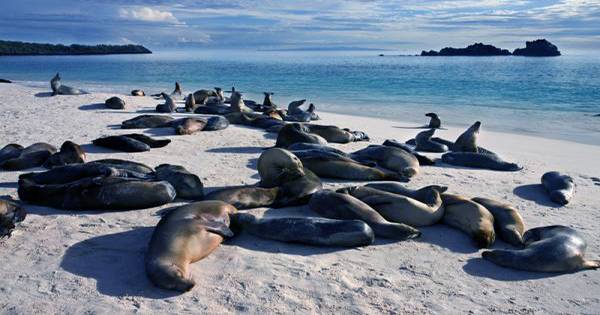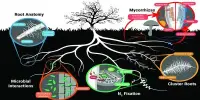The adaptability of animals to the Galapagos Islands famously stimulated Charles Darwin’s thought, which led to a great scientific revolution. Scientists have been studying the islands since then. One question that surprised them could eventually be solved: the source of the biologically rich sound that inspired Darwin so much.
Moderate rainfall on steep cliffs or near sea level in the islands is not conducive to abundant plant life, which forms the basis of the food chain in other tropical islands. Instead, the biological resources of the Galápagos come from the sea. Nutrient-rich bottom waters well up around the islands at certain times of the year, driving explosive phytoplankton growth. The center of the upstream was once home to so many whales that its discovery is known as “Mother Burden”. Around the islands, there is plenty of fish in the water, on which the islands have birds, seals, and iguanas prey.
The mystery is why the excitement took place in such a convenient place – Darwin’s work disregarded this notion and a benevolent creator decided to give gifts to the islands. In the 1960s, oceanographers proposed that when an equatorial Undercurrent enters the islands, they bring nutrients to the surface. The Undercurrent flows north and south about 100 m (330 feet) below the surface opposite the currents -driven currents.
Alberto Garabato, a professor at the University of Southampton in the UK, noted that there is little observation about how the Undercurrent interacted with these islands, and it is doubtful that the story should have anything more. As these waters are rich they experience extreme fluctuations, especially characterized by sharp waterfalls of phytoplankton density during El Niño events.
Garabato and colleagues noted that warmer intensities are related to the seasonal energy of the region’s main winds, which blow mostly north and somewhat west. They wanted a functional connection, and a study published in Scientific Reports explains how these gases allow turbulence in the oceans of regions to rise to the surface of nutrient-rich cold water.
This instability is characterized by a sharp contrast known as the seafront above the water temperature, which, combined with the storm, is similar to the smaller versions of the cold fronts seen on the weather map. The islands are surrounded by one of the largest marine parks in the world, but in the dark, the fishing fleets are just outside the protected waters.
“This new knowledge of where and how deep-sea nutrient injection into the Galapagos ecosystem takes place informs ongoing plans to expand the Galapagos Marine Reserve and improve its management against the growing pressures of climate change and human exploitation,” Garabato said in a statement. A better understanding of the causes of excitement can improve the timing of events and the subsequent emergence of life.















